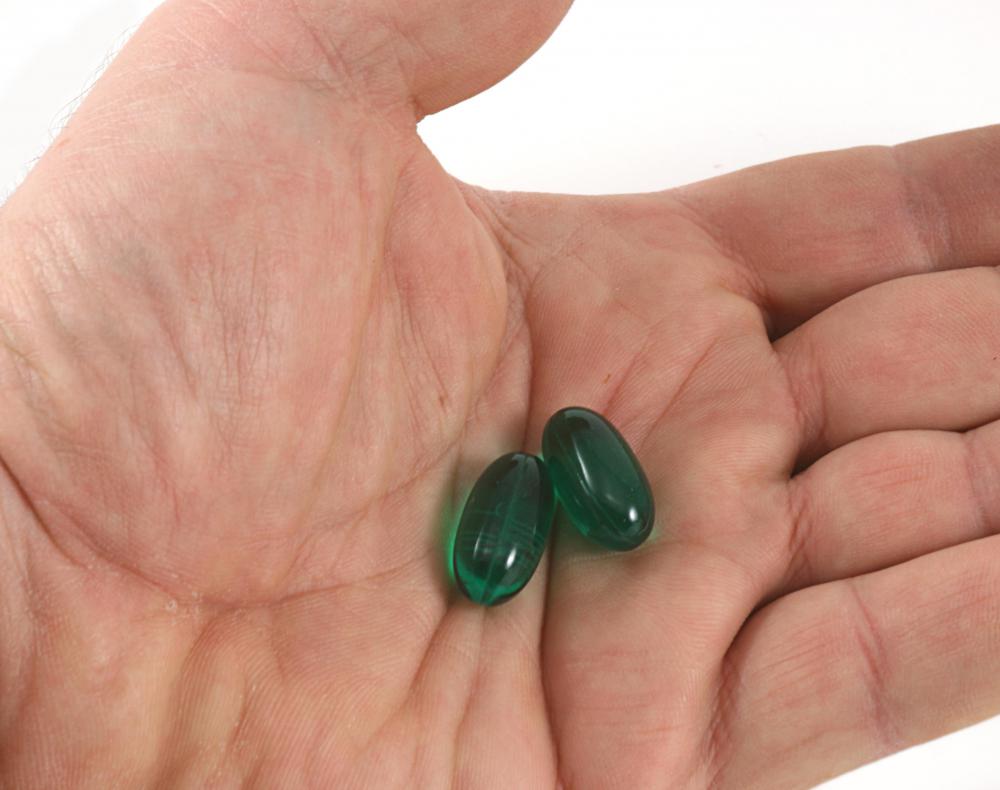At WiseGEEK, we're committed to delivering accurate, trustworthy information. Our expert-authored content is rigorously fact-checked and sourced from credible authorities. Discover how we uphold the highest standards in providing you with reliable knowledge.
What is the Difference Between Chlorella and Spirulina?
Chlorella and spirulina both come from an algae known as cyanobacteria. They both have high levels of minerals, proteins, and vitamins but differ in several key ways, most notably how they work in the body and their structure. Chlorella is a green algae and has about ten times more chlorophyll than spirulina, making it an efficient detoxifier. It also has more antioxidants than spirulina. Spirulina is a blue-green algae, and is not as old a species as chlorella.
Spirulina is a blue-green algae that grows naturally in lakes and warm, fresh-water ponds, and first formed millions of years ago. It is rich in protein and calcium, and is one of the few sources of vitamin B12 in the plant world. Spirulina also has other vitamins such as vitamins C, D, and E. It is also very rich in iron and magnesium. Due to the fact it has so many vital nutrients, many consider it a “super food”, or one that has almost everything the body needs for nutrition.

Chlorella is a green algae and naturally grows in fresh water. It is thought to be billions of years old, but was first used as a modern food source around the 19th century. Like spirulina, it contains many nutrients the body needs, but seems to contain more of them. For example, it has more iron and chlorophyll than spirulina. It also has a true nucleus, which spirulina does not have.

Both chlorella and spirulina are thought to help support the immune system, as well as aid digestion. Studies have been done that suggest chlorella has anti-cancer properties and promotes vascular function. Spirulina has shown evidence that it is effective for reducing the risk of stroke, as well as reducing damage to the heart. Athletes also use spirulina to help gain weight.

Overall, the differences between chlorella and spirulina are minor compared to their similarities. They are, more often than not, used together. Both are sold over-the-counter and are generally considered safe. They don’t typically have side effects, but some people do have an allergic type reaction to spirulina, with symptoms such as fever and a rash. This is thought to be due to the high amount of protein, which can be hard to digest.

Chlorella and spirulina should be purchased from a reputable source. There is a danger of toxic contamination if either is grown in unclean water. Even though these substances are considered dietary supplements, it is always recommended to consult with a physician before taking them, especially if taking medication.
AS FEATURED ON:
AS FEATURED ON:















Discussion Comments
Is it true that Chlorella grabs and releases the metals and leaves them in your body?
Dr. Mercola says Spirolina is older, you say younger. Maybe it does not matter, but it just looks funny when two reputable websites disagree. --MLC
Spirulina benefits also include control of high blood pressure and cholesterol.
Its side effects include having a slight fever (due to increased metabolism), dark green stools (due to being high in chloraphyll), excessive gas (if you have a buildup in your digestive system or it's not functioning properly), itchy skin (temporarily caused by the colon cleansing process) and feelings of excitement (as your body is converting protein into heat energy which can cause temporary feelings of restlessness).
Let your body adjust by dosing gradually. Increase your water intake.
Post your comments